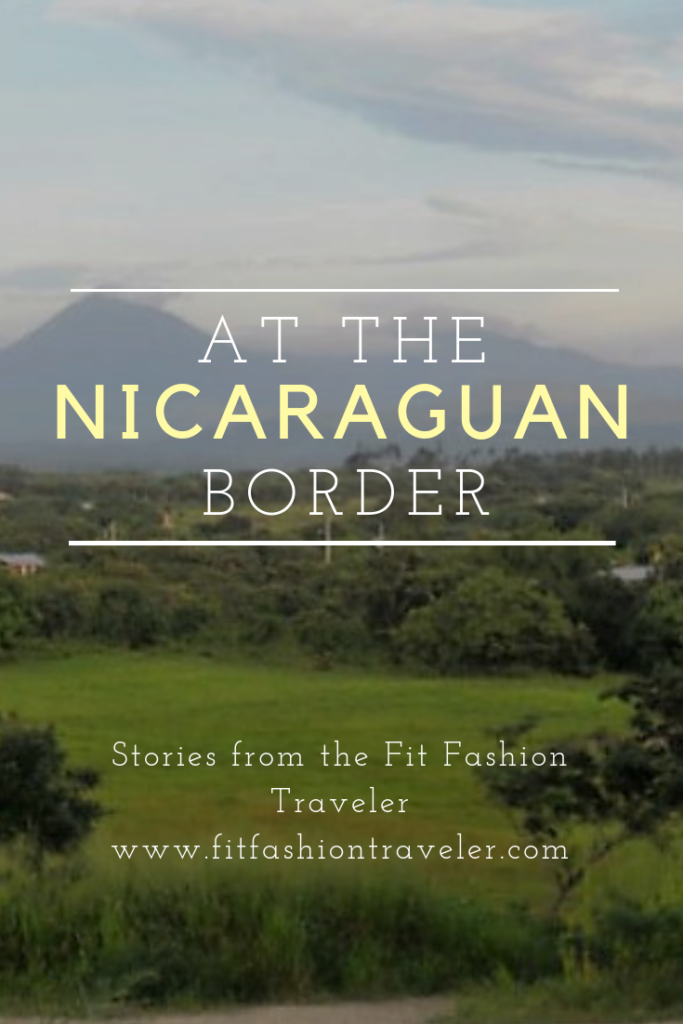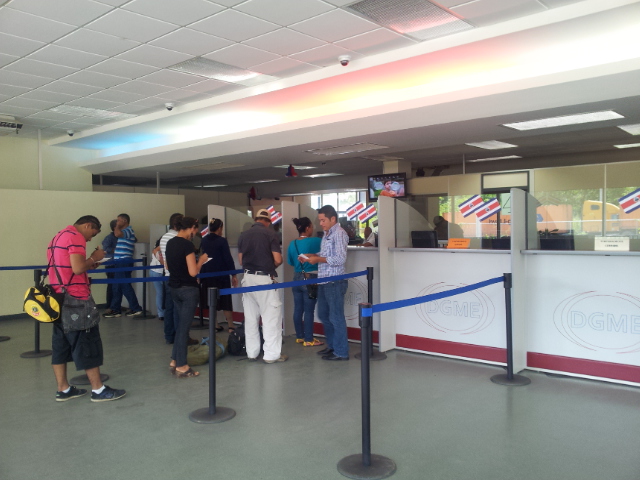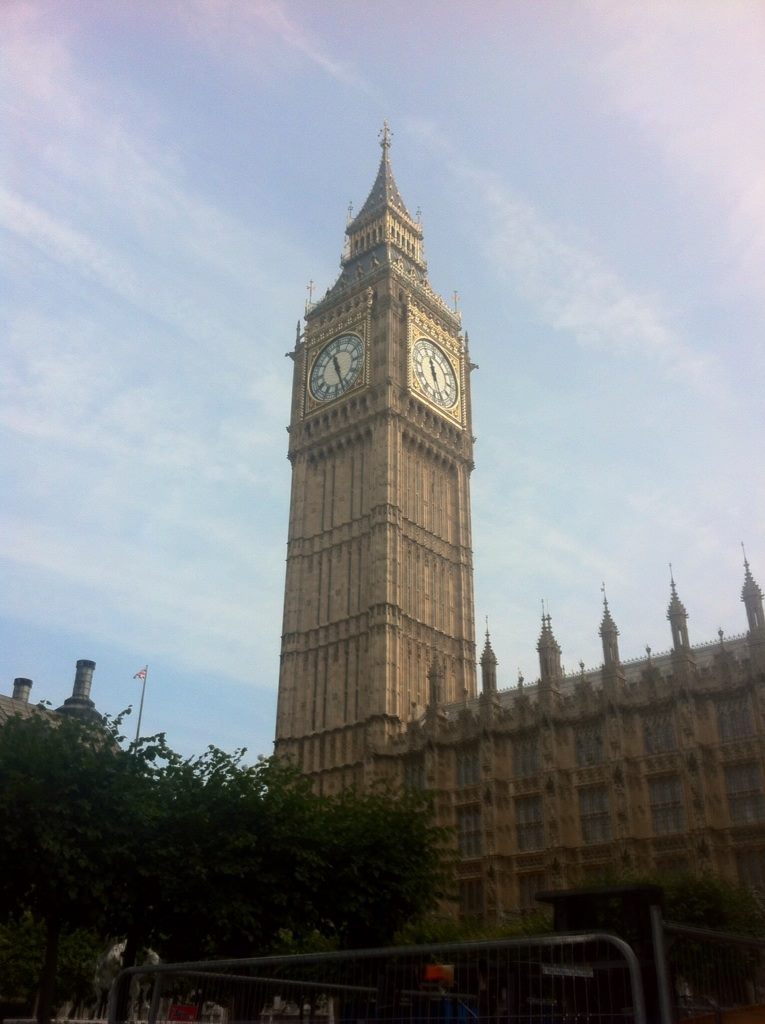
by Kelly | Jul 1, 2018 | Europe, London, Travel, United Kingdom
So you want to go to London!
This beautiful city is one of the biggest transportation hubs in the world, so whether you’re arriving by plane, train, bus, or car, you should have no problem getting to the city quickly and easily from wherever you are.
Looking for more information on London? Check out the post Top 6 Restaurants in London’s Royal Borough of Kensington and Chelsea!
By Plane
London is serviced by five international airports: Heathrow, Gatwick, Stansted, Luton, and London City. You can reach central London from each of them by public transportation or taxi, so it doesn’t make too much difference which one you fly into.
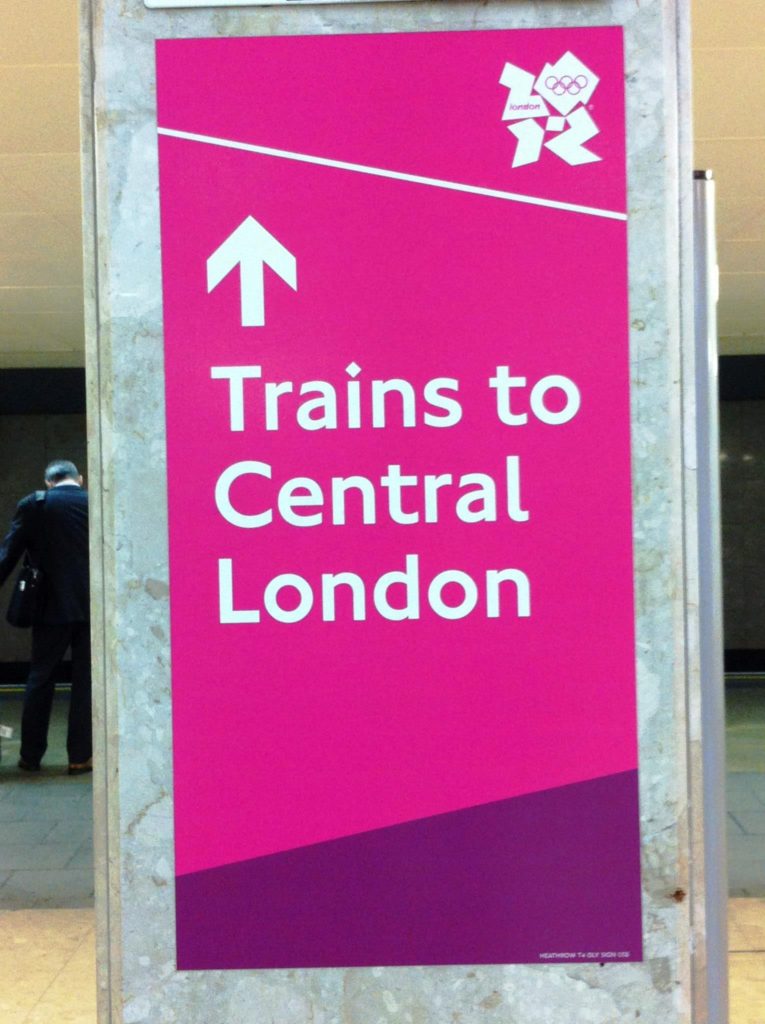
Heathrow: Heathrow is the main London airport for flights coming from the U.S., although direct flights are now available to Gatwick and Stansted as well. The easiest and cheapest way to get from Heathrow to downtown London is to take London’s subway, officially known as the Underground and commonly referred to as the Tube. To do so, purchase an Oyster Card at the airport (you will get a refund when you return it later), add value, and board the Picadilly Line, the only line available from Heathrow. The first half of this journey on the Tube is above ground, so it is a relaxing way to experience your first views of the city.
However, it will take you over an hour to reach central London from Heathrow by subway, so for a few pounds more it is well worth it to take the Heathrow Express train to Paddington Station. It will take you just 15 minutes to get into the city using this option. You will be dropped off at Paddington Station, from which four Tube lines are accessible.
You could also consider taking a National Express bus or a taxi, but the price of the taxi could be double or triple that of the train, and both methods will still take about an hour to get into the city.
Gatwick, Standsted, and Luton: To get from Gatwick, Stansted, or Luton Airports to London, you can take a train, bus, or taxi. The train is most advisable as it will take you right into one of London’s major train stations (Victoria or Blackfriars Station from Gatwick, St. Pancras Station from Luton, and Liverpool Street from Stansted). Tickets cost between $13 and $23, and trips take about 30 minutes. By contrast, bus tickets are less than $10 and will also get you to a major train station but could take closer to an hour. The biggest advantage of taking the National Express bus service over the UK’s National Rail service, aside from the cost, is that the bus is rarely if ever affected by strikes (I once waited over an hour for a train from Stansted to London after returning from a week-long trip, which was tiresome and frustrating when all I wanted was to be back relaxing in my apartment).
London City: London City is the smallest of the London airports, but it does service international flights on budget airlines. It is also on the Tube system, so you can take the above-ground DLR train from the airport to Canning Town station and then access the rest of the Tube network from there. A trip on the Tube to central London will take about twenty minutes; a taxi from London City airport will take about a half hour.
By Train
If you are traveling to London from somewhere else in Europe, I recommend taking the train. Your journey will end right in central London at one of its many beautiful train stations, and you will have a chance to take a picturesque ride through the countryside. If you will be pre-booking your train ticket online (versus buying it at the train station), check out TheTrainLine.com for the cheapest tickets available. You can access additional discounts by purchasing a railcard, such as the railcard for travelers under 25 years old, which would be cost-effective if you plan to take multiple train rides around Great Britain.
The most popular train from continental Europe to London is the Eurostar! Although it is more expensive than flying, it is much faster and will take you right from city center to city center. For both the convenience and experience, taking the Eurostar between London and Paris or any of its other accessible cities is definitely worthwhile.
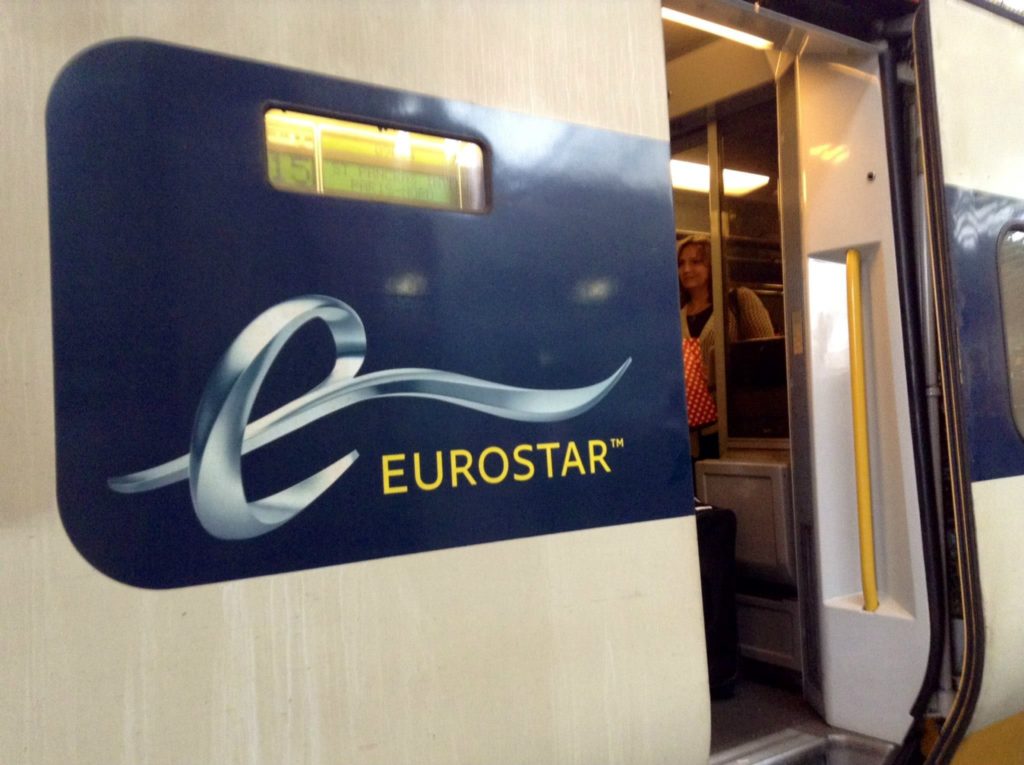
By Bus
Although London sits on the island of Great Britain, it is actually accessible by coach bus from various locations within the country and around continental Europe! National Express buses are available for cheap transportation around Great Britain; to find other bus lines for transportation to and from Europe, check out GoEuro.com. The bus may be the least comfortable transport option, but it is also the cheapest, and like the trains will bring you right from city center to city center.
By Car
Of course if you have access to a car, driving to London is always an option. It is accessible by multiple major highways in Great Britain. Keep in mind if you are not used to driving in a British-owned territory that cars drive on the left-hand side of the road, left turns on red lights are generally not permitted, and gas prices may be higher than what you are used to (currently gas costs around $5.79 USD per gallon in the UK, and just $3.50 USD per gallon in the U.S.).
The biggest downside to driving in London is the Congestion Charge that applies as a toll in city center. The charge applies from 7 AM to 6 PM Monday through Friday, and will be applied whenever you enter the Congestion Charge Zone. The zone expands from Hyde Park in the West to just past Liverpool Street Station in the East, and from Kings Cross Station in the North down past Borough Market in the South. The charge is about $18 USD for each entrance into the zone. However, the freedom of having your own transportation may make the extra fees worth it.
Love this post? Save it to Pinterest for later!
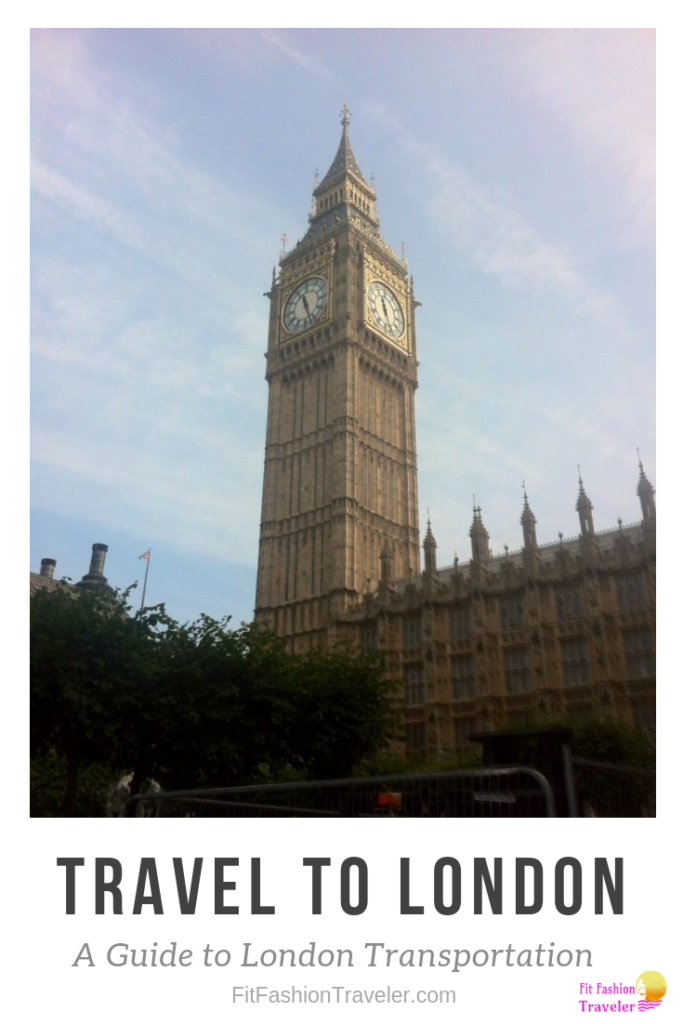
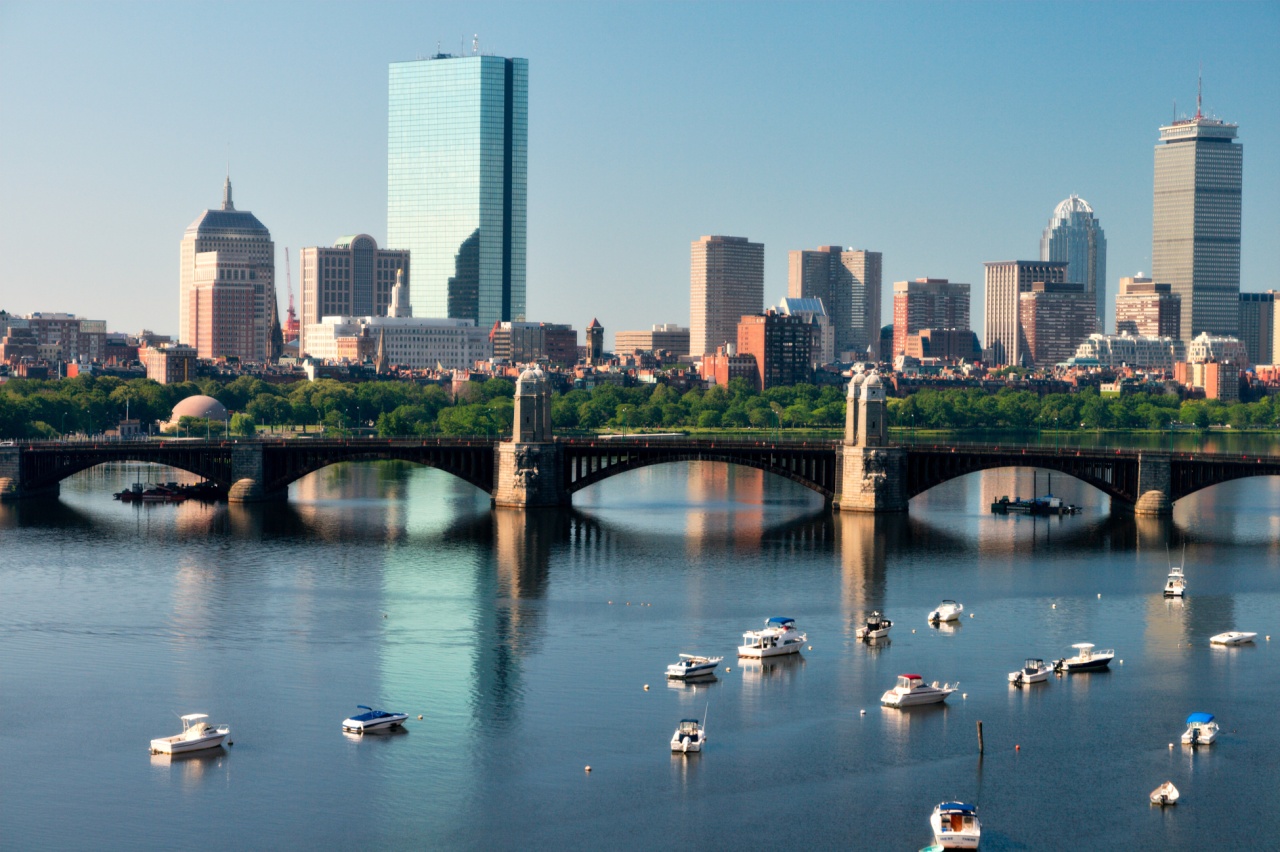
by Kelly | Mar 16, 2017 | Boston, Massachusetts, North America, Travel, Travel Advice, United States
So you want to visit Boston!
I have lived in Boston for about 10 years, first as a student and now as a young professional, and I am so excited to share what I know about the city over the next few posts. The first thing you need to do is get here: Boston is easily accessible by car, plane, train, and bus.
Driving to Boston
Boston is on the far Eastern coast of the United States. If you’re going to drive here, you have a few major highways to pick from. Visitors from the West, you’re probably going to drive in on Route 90 aka the Mass Pike or the Pike. I use the Pike every time I go home to visit my family and in 10 years I have never had a great experience. The speed limit may be posted as your standard 65 m.p.h., but if you’re not going at least 70 in the middle lane you will have someone on your bumper almost immediately. Further, the left lane is not necessarily used for passing, but for drivers going over 80 m.p.h. I recommend spending as little time on the Pike as possible, though it is unfortunately the best way for most drivers to reach Boston.
The other major highways running through Boston are Routes 93 and 95, both running North to South. In fact, Route 95 runs the entire length of the U.S. East Coast from Maine to Florida! They are more manageable to drive on than the Pike , but be careful going South on 93 as it doesn’t continue down to Rhode Island or Cape Cod (aka “the Cape”) but instead loops back around to the city.
As in any major city, parking in Boston can be difficult to find and expensive. If you are able to find a metered spot, I recommend using the “Park Boston” app to pay for your meter. If you find yourself out longer than anticipated and your meter is about to run out, you can just re-load time using your smartphone instead of running back to your car. If you are heading for the North End, the best garage to use is Parcel 7 because most North End locations will validate your ticket, leaving you to pay just $1 for 2 hours or $2 for 3 hours, which is unheard of in Boston. Most hotels will have parking garages available for you to leave your car, but likely at a steep price. Many people will opt instead to leave their cars outside the city at a T-station and take the T (the metro system) into the city instead.
Flying to Boston
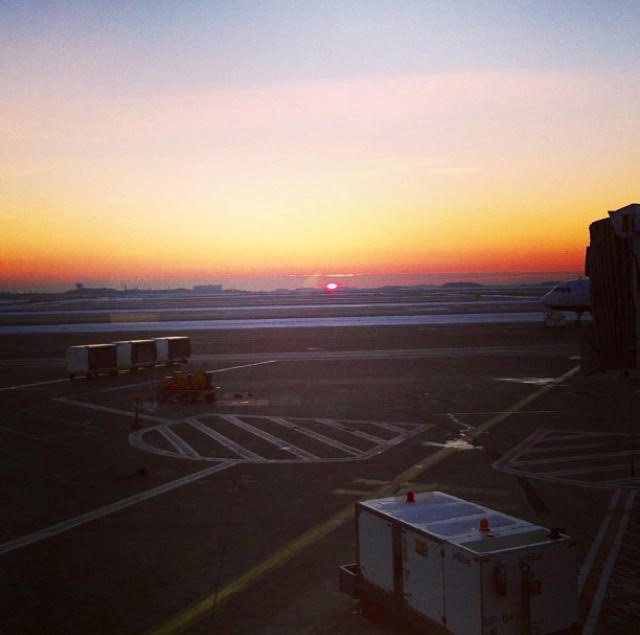
Sunrise over Boston Harbor from the window of Boston’s Logan Airport
Boston has its own airport pretty close to the city, Boston Logan Airport (BOS). This is the best airport to use to get to Boston, and it is serviced by 40 different airlines flying to and from 35 different countries and territories as well as most of the U.S. Other regional airports include Manchester, New Hampshire, and Providence, Rhode Island, but they are smaller, about an hour away, and will require you to rent a car or take a bus or train into the city.
Once you arrive at Logan Airport, you can catch a taxi at the taxi stand. The ride to city center will be about 15-20 minutes depending on traffic and cost about $35 plus tip. You can also rent a car, though as a local I have never had that experience so unfortunately cannot offer any information on doing so.
Your other option to get into the city is to take our metro system, known as the T! I highly recommend taking the Silver Line (which is actually a bus) to South Station, and then connecting to the rest of the T system from there. This is probably the quickest and most direct way to get to the city, and will take about 20 minutes. The other T line accessing the airport is the Blue Line: to use this line, you’ll need to catch the #88 shuttle bus at the airport, and then transfer at the aptly-named Airport T stop. Either way you choose, it will cost $2.75 per ride with a Charlie ticket, $12 for a 24-hour pass, or $21.25 for a 7-day pass. If you can find a Charlie Card at the airport, rides will be just $2.25 each.
Boston by Train or Bus
As with most cities, the most direct way to the city center is to arrive at the train station. Boston’s South Station is the main Boston station for Amtrak trains, though some trains also arrive at the North Station. The bus terminal is also located at South Station. Two types of trains roll into Boston each day, the Accela and the Northeast Regional. The Accela is more expensive, but travels faster and has less stops. Its interior is also more spacious and it usually has a dining car. The Northeast Regional is cheaper but stops multiple times along the Connecticut coast, in Rhode Island, and in southern Massachusetts coming from New York City (which could be ideal if you’re not originating in NYC).
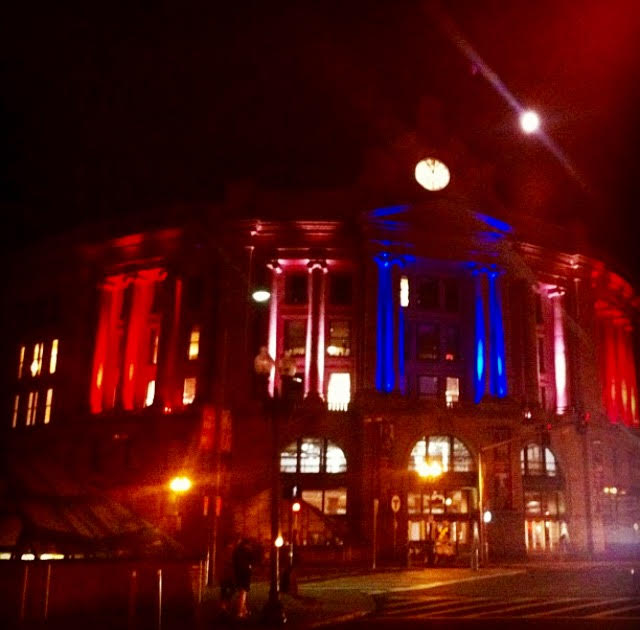
South Station by Night
You can take a bus to Boston from New York City, Springfield, MA, Rhode Island, New Hampshire, or Connecticut. Your bus line options run the gamut from the super-cheap Lucky Star and Mega Bus lines to the very common Peter Pan and Greyhound buses.
Both the Red and Silver lines of the T run through South Station, so as soon as you arrive you can easily get to your final destination! There is also a taxi stand available just outside where you can catch a cab.
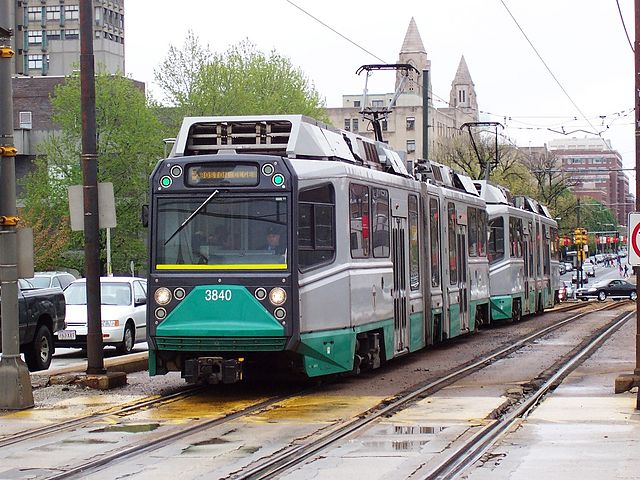
The T
Welcome to Boston! Now that you’re in the city, stay tuned for posts in the near future highlighting places to go and things to see.
Love this post? Save it on Pinterest for later!
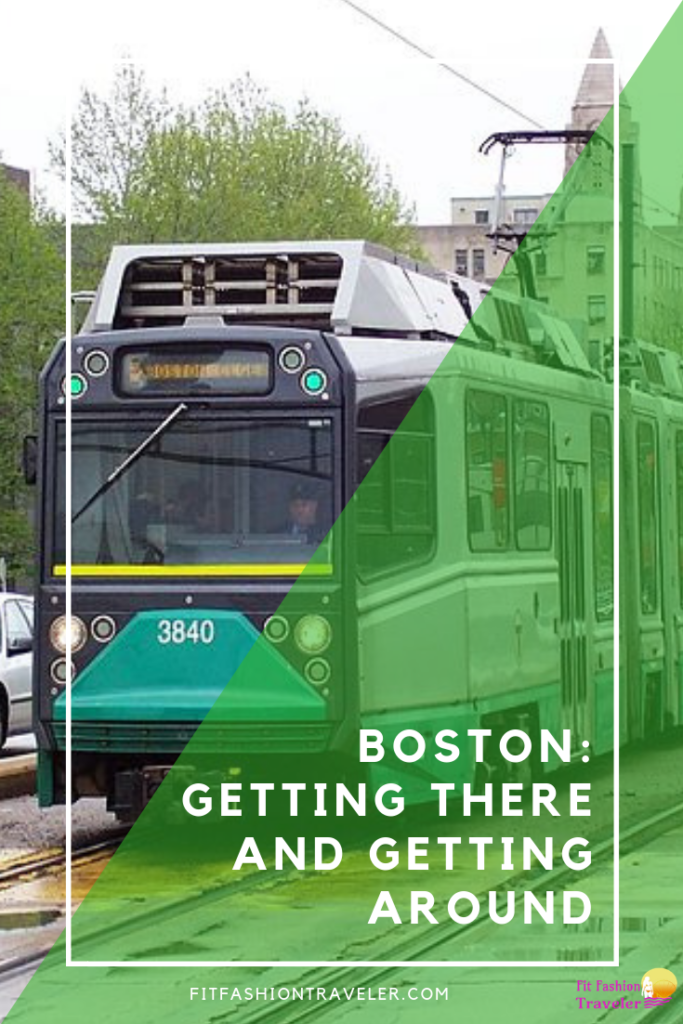

by Kelly | Jun 23, 2018
If you're looking for a personalized travel planning service, look no further! The Fit Fashion Travel trip planners have over ten years of experience planning domestic and international vacations and business trips. We can help you find the best flights, the perfect hotels, the most memorable experiences, and then put it all together into an unforgettable itinerary. For completely stress-free vacation planning, let us make your reservations and bookings for you, and then help obtain travel insurance to cover your investment.
Talk more about your products here.
Tell prospective customers more about your company and the services you offer here. Replace this image with one more fitting to your business.
Talk more about your products here.
Tell prospective customers more about your company and the services you offer here. Replace this image with one more fitting to your business.
Check out the following sample itineraries to see what our planners put together!
One Day in Boston
Havana in One Day
A Day in Bermuda
Price List:
Logistics planning (flights and hotels): $50 per city
Add on-the-ground transportation: $20 per city
Daily itineraries: $50 flat fee + $10 per day
Add reservation service: $25 flat fee per itinerary
Next Steps...
This is should be a prospective customer's number one call to action, e.g., requesting a quote or perusing your product catalog.
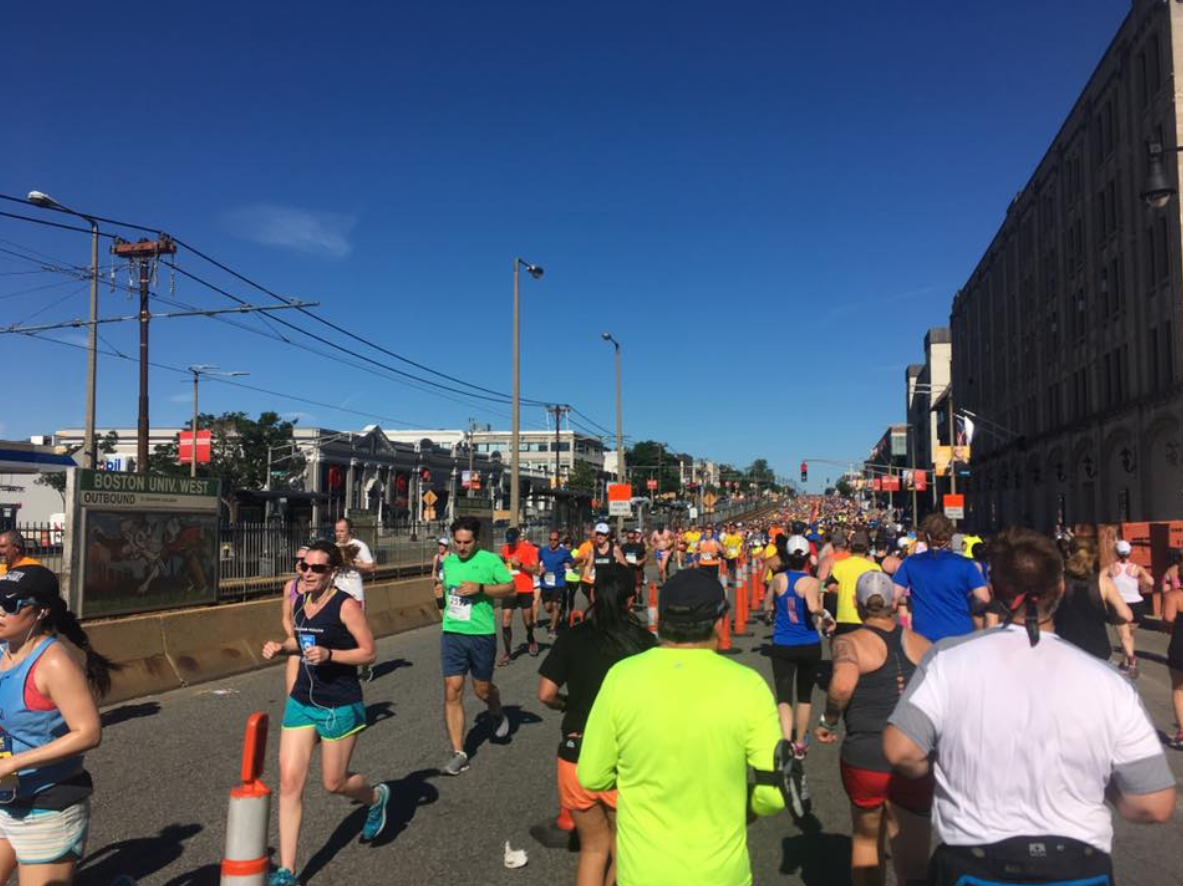
by Kelly | Jan 23, 2018 | Boston, Fit Travel, Massachusetts, North America, Travel, United States
There is no shortage of fitness options in this city! Boston is an epicenter of young professionals, and we certainly uphold the millennial stereotype of enjoying our studio classes and other workouts in the city.
Outdoor Options
Boston has many green spaces perfect for working out year-round. As the top running race in the world, the Boston Marathon, is held here, you will always see people who are either training for the Marathon or inspired by the runners running through the streets and on the Esplanade along the Charles River. If you are not at a level to participate in the Boston Marathon, the Boston Athletic Association offers 5K, 10K, and Half Marathon Races that run on the same streets through the city. In fact, the 5K occurs two days before the Marathon and the route has runners race right over the Marathon finish line after making the infamous right on Hereford, left on Boylston turns that marathon finishers make.
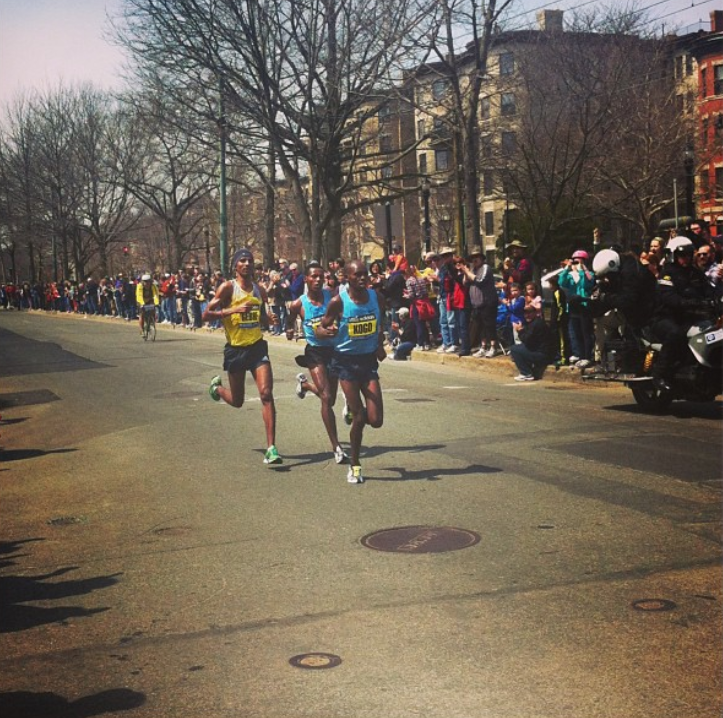
Boston Marathon Top Runners
Biking has also become popular in Boston recently. Many people use the city’s well-constructed bike lanes to commute to and from work, but if you’re looking for more of a leisurely ride you can rent a Hubway bike with a credit card from any of the Hubway stands and then ride along the Esplanade or the Charles River Bike Path in Cambridge with no risk of interference from motor vehicles.
Many fitness centers offer free outdoor classes in the summer as well. Through these programs you can find yoga in the parks, early morning outdoor boot camp classes, and Zumba® by Healthworks at the Hatch Shell on the Esplanade in the evening!
Spin Studios
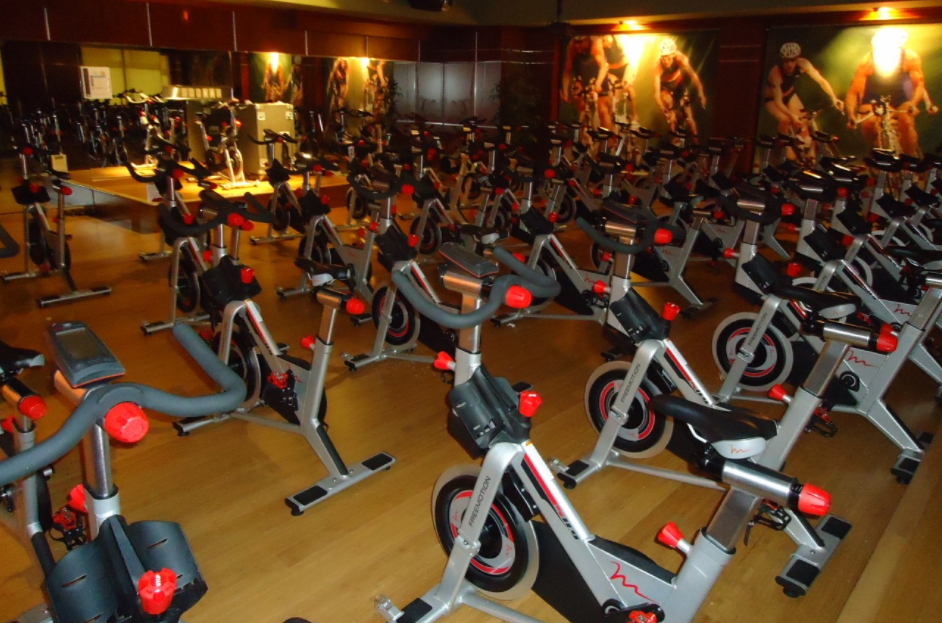
What city full of young professionals would be complete without a plethora of spin studios? In Boston, you will find the national studios Soul Cycle, Turnstyle, and Flywheel, as well as local studios including B Spoke, The Handle Bar, and C-Town Cycle. Most of these locations offer free or discounted classes for first-time students, so you can try as many as you’d like without spending your entire vacation budget! My favorite – so far – is Turnstyle’s South End studio, but I have friends who prefer B Spoke, Soul Cycle, and Flywheel as well.
Yoga Classes
As with the spin studios, Boston’s residents would not be content without yoga studios around every corner. There are really too many to list, with local studios seemingly appearing every week, but some of my favorites include Down Under Yoga and Core Power Yoga (especially the C2 class). I’ve never had a bad experience at a Boston yoga studio, and similar to the spin studios, most studios will offer first-time student discounts or free classes so you can check them out while you’re in the city.
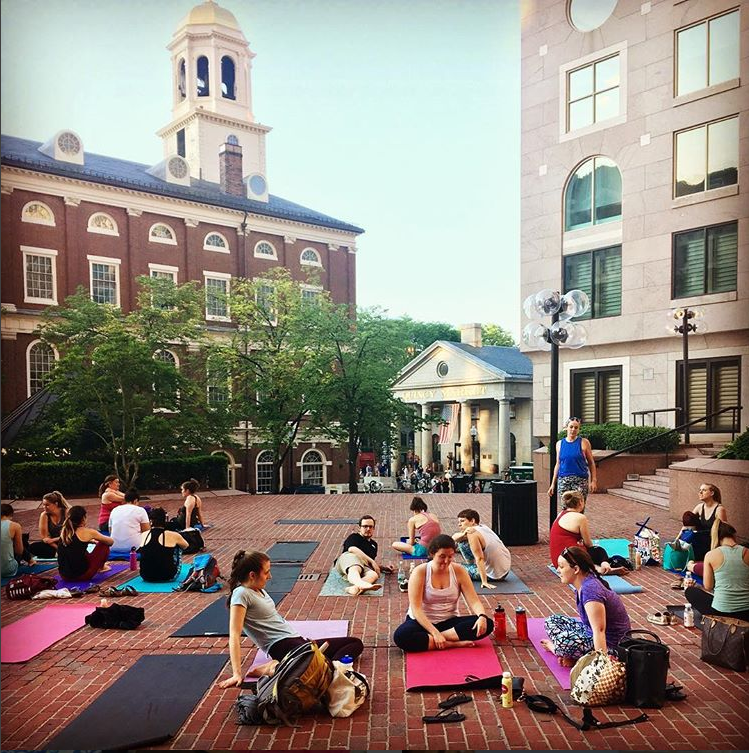
Yoga in the shadow of Boston’s Faneuil Hall
Indoor Rock Climbing
A recent phenomenon in the Boston area is indoor rock climbing. Brooklyn Boulders and Rock Spot Climbing are the two favorites among Bostonians. Just show up with your sneakers and the gyms will have all the other equipment that you need, like helmets and ropes. A professional on site will be available to explain everything and help belay if you’ve never done rock-climbing before, so if you are up for something new this is certainly worth trying out!
Dancing Lessons
A common theme you will come to notice in my posts is that I love to dance, and try to fit dancing into my life as much as possible. Because of this, I must talk about dancing in Boston as a fitness option. In addition to just sweating it out in one of our clubs or lounges on a weekend night, Boston offers dance lessons at various studios for those looking to learn the basics of different styles of dance.
The Boston Ballet, the company that produces The Nutcracker each year, offers open adult classes to which you can drop-in. If you’ve never danced before, the company provides an Intro to Ballet Workshop where you can start your journey towards becoming a ballerina. If you travel a bit outside the city, The Studio in Brookline also offers drop-in adult dance classes for all levels in many styles of dance including ballet, tap, jazz, lyrical, contemporary, and pointe.
To learn some Latin dancing, especially Caribbean-style salsa, check out the lessons offered by Salsa y Control in Allston and Cambridge. The instructors from Salsa y Control also offer lessons at The Havana Club in Cambridge on Friday nights before the club is open to all levels for the best Latin dance party in Boston, where you can show off the moves you learned!

Night Out at the Havana Club
Love this post? Save it on Pinterest for later!
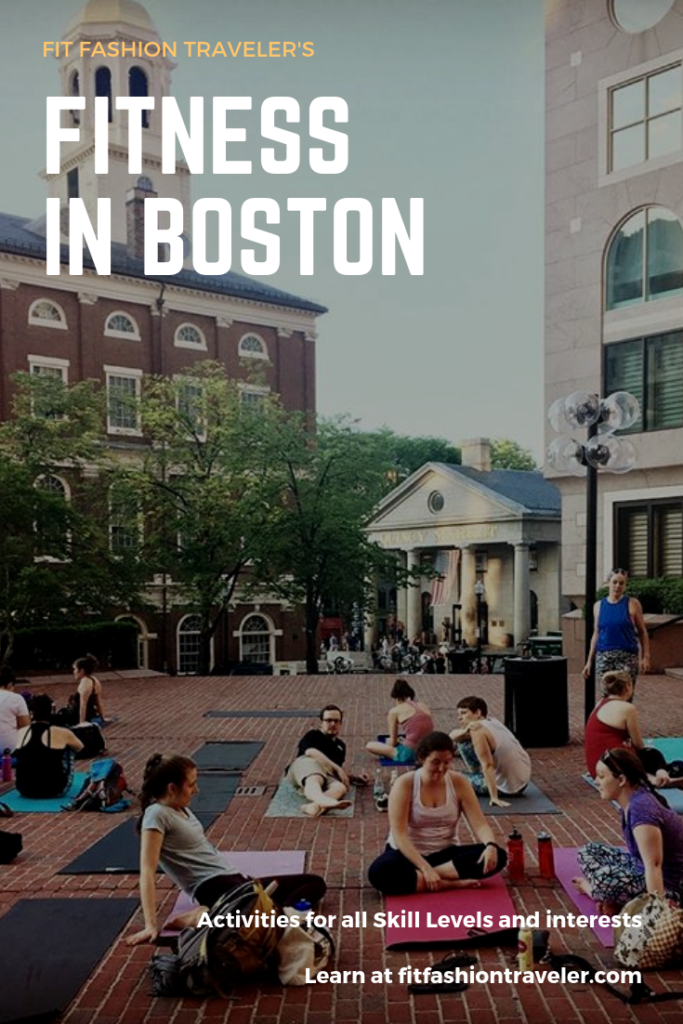
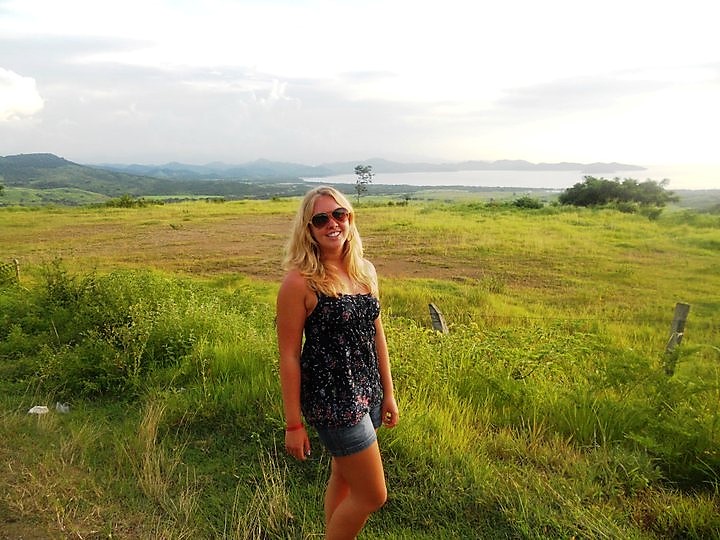
by Kelly | Oct 14, 2018 | Central America, Costa Rica, Day Trips, Travel
The summer after college, my parents and I went on a week-long vacation to Costa Rica. Instead of flying into the capital San Jose, we went to the little-known Guanacaste region in the Northwest corner of the country.
At the Resort
The resort we stayed at, the Hotel Riu, was beautiful. Its grounds offered multiple restaurants, at least three pools, and a long private beach. The typical resort activities were available, such as water aerobics in the pool and water sports on the ocean. There was more than enough to keep my family occupied for our entire week’s stay, especially with our off-site day-trips.
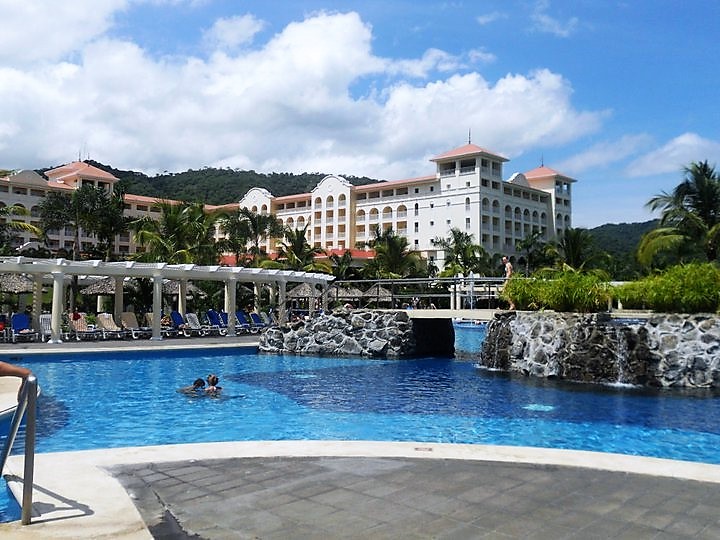
Our resort pool with the hotel in the background
These were the circumstances under which I suggested to my parents that we drive to Nicaragua for an afternoon. It was our first full day of vacation: we had spent the morning lounging by the pool soaking up the sun. When the daily tropical rainstorm hit, we headed under cover for lunch. At that time, we discussed what we might do for the afternoon. I had seen on our map that we were only about an hour from the Nicaraguan border. At the rental car company, there had been advertisements for day-trips to a Nicaraguan town just over the border. Given my desire to visit every country in my world, this seemed like my chance to pick up Nicaragua. To my surprise, my parents said “ok” and after lunch we were on our way!
Driving in Costa Rica
For our vacation, my parents rented a car. The roads were what you would expect in a developing country: unpaved, no street lights, and not offering great directions. For example, our resort was on a road off of “Monkey Way”. The rules of the road were no different. Drivers traveled as they pleased and if someone was going too slow in front of you, you drove on the other side of the road to get around them (but not necessarily in designated areas as in the United States). We often found ourselves driving around cattle roaming the streets rather than cars. At one point our GPS sent us down a flooded road in the middle of the rain forest where there was no room to turn around and avoid the deep puddle.
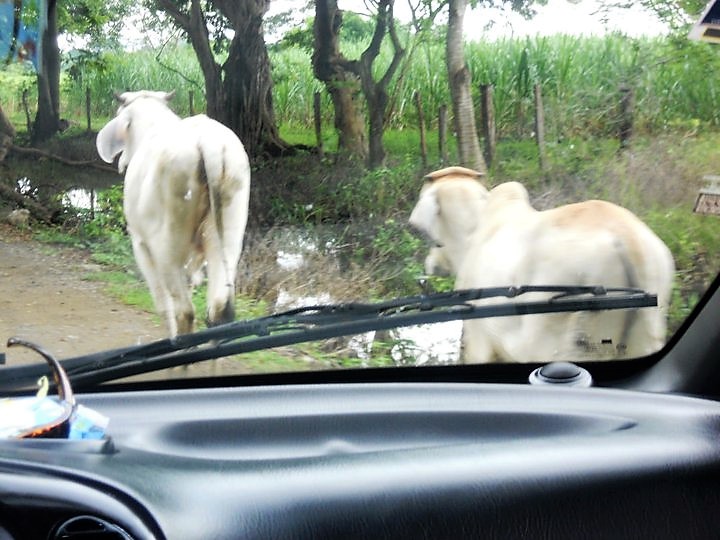
Cattle in the road in front of our car
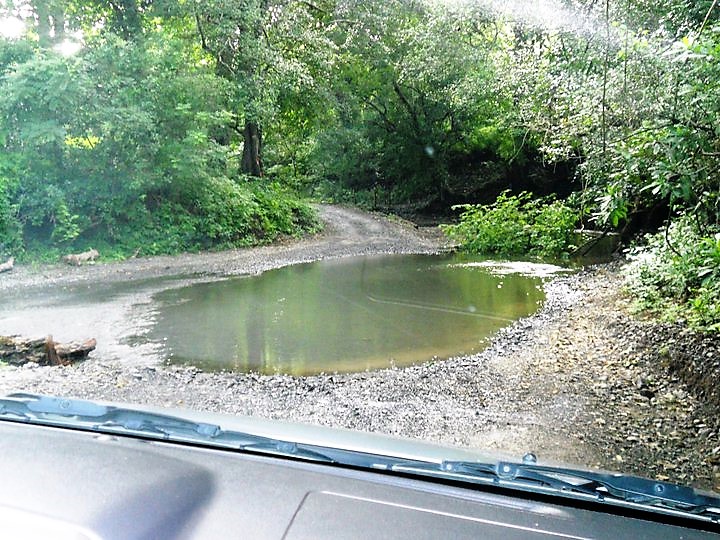
Giant puddle in the road where our GPS had brought us- luckily we had a 4-wheel-drive that could get through it!
The Drive to Nicaragua
To get to Nicaragua from the Riu, we traveled back through the town of Liberia into which we had flown, then headed North on Route 1, the Inter-American “highway”. This two-lane road is the main through way on the West side of Central America. Therefore, it is filled with 18-wheeler trucks transporting goods between countries. The trucks themselves did not cause any issues while traveling along the road. However, from what we could tell, the customs inspection site at the border took time for trucks to get through and closed early in the evening. This meant that about ten miles from the Nicaraguan border trucks that would not make it through customs that day pulled over to spend the night on the side of the road. The drivers even had hammocks they hung under their trucks to sleep in!
When we approached the first few trucks that had pulled over, we were unsure why there was such traffic. Then we saw a car in front of us pull out of the lane and drive down the opposite lane! Assuming this was the proper thing to do – drive the wrong way towards potentially oncoming traffic – we pulled out and did the same thing. It seemed like a great plan until the car in front of us quickly swerved back towards the trucks parked on our side of the road, unveiling another giant 18-wheeler coming in our direction! We quickly moved back into our lane best we could to let the truck go by, narrowly avoiding being smashed. A few minutes later we made the same maneuver to the other side of the road halfway into a ditch. As I said earlier, there were no real rules of the road in that part of Costa Rica. No one else seemed surprised to find cars driving on the wrong side of the road up the highway.

Costa Rican volcanic landscape on the drive to the border
Experience at the Border
My parents and I finally arrived at the border unscathed. The border area between Costa Rica and Nicaragua is unlike that of Western nations. For example, between the U.S. and Canada there are toll booth-like stations on the road with immigration officers manning them. When you leave the U.S. and enter Canada, you stop at the booth, speak with the Canadian immigration officer, show him your passport, and proceed into Canada. The same occurs on the way back into the U.S.
Between Costa Rica and Nicaragua there are two large buildings about 100 meters apart. You stop first at the Costa Rican building. As soon as we parked our car outside the building, it was surrounded by five Nicaraguan teenagers in brightly-colored Abercrombie t-shirts. At the time, I “spoke” some Spanish, and my parents spoke none. I did not completely understand what the teenagers wanted other than to exchange money with us. I tried to make them go away so we could enter the immigration building. They were rather aggressive in their desire to take our Costa Rican colones and give us Nicaraguan pesos in return. This experience was unsettling to my parents, so my dad and I left my mom with the car as we entered the Costa Rican immigration building with our three family passports.
Inside the building there were a dozen of what looked like bank teller counters. One lone immigration officer sat behind one of the counters. We approached him with our passports, and I managed to convey that we were going to Nicaragua for the day. He did not understand why we were two people but had three passports with us. Finally the officer accepted that my mom was outside with our car and gave us the three “exit” stamps. As we left the building the Nicaraguan teenagers we waiting for us, again trying to exchange money. They also tried to say something in broken English about leaving our car behind, but we definitely weren’t about to do that.
The Big Decision
About 30 meters past the Costa Rican immigration building, we decided that maybe this day trip wasn’t such a good idea after all. At this point, we were in the 100-meter stretch of land between Costa Rica and Nicaragua. We had exited Costa Rica, but had not yet reached the Nicaraguan immigration building to enter Nicaragua. We made our U-turn in this area and started to head back. Then I realized we had exit stamps in our passports. If we did not rectify the situation before returning to our resort, we would raise red flags at the airport later when we tried to leave the country without valid entry stamps. This meant we had to return to the Costa Rican immigration building.
The lone immigration officer sitting behind the counter was not happy to see us back so soon. He said something like “I just let you out, what do you mean you want to come back already?” We were clearly interrupting his alone-time, since his checkpoint was nowhere near busy. Instead of just giving us entry stamps again, the immigration officer made us make copies of our passports in another building before he voided our exit stamps.
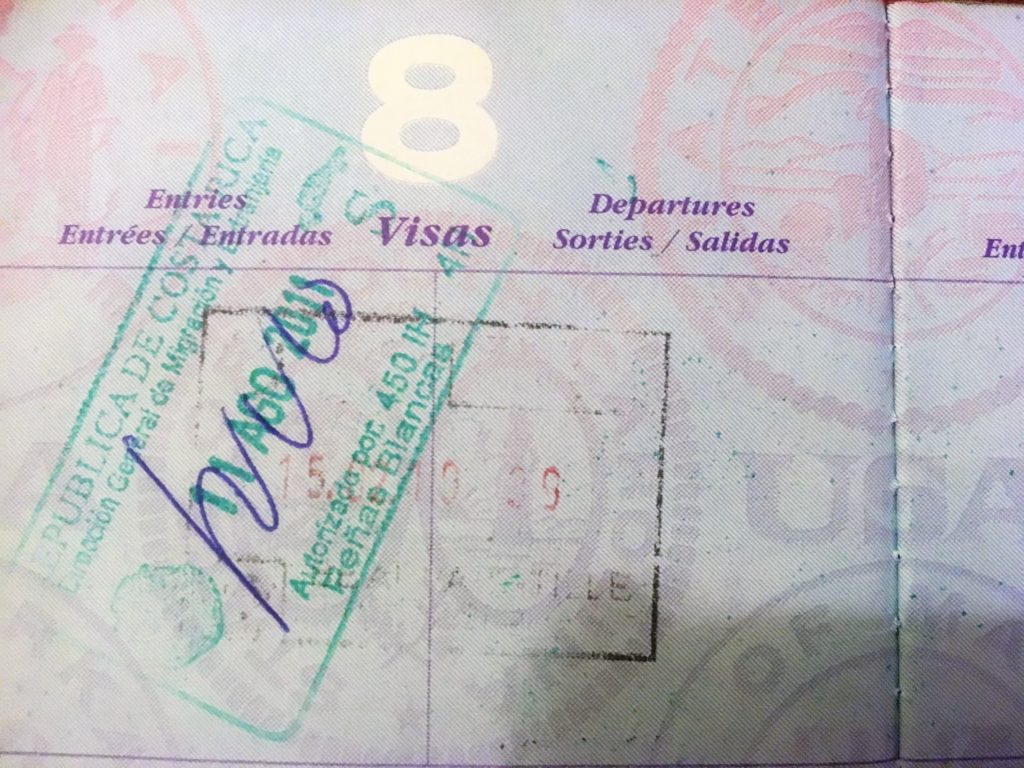
The only voided passport stamp I’ve ever seen!
Happy to be Back
After about an hour at the Costa Rican border, we were on our way back to our resort. We were happy to get back and sit by the pool with a few drinks when we returned. Later, we learned that it is illegal to bring a rental car from Costa Rica across country borders. The car could have been impounded and my family and I thrown in jail or fined! It’s a good thing we never made it to Nicaragua: I will have to add it to my list another time.

View of the Costa Rican Pacific Coast on our ride back to the resort
